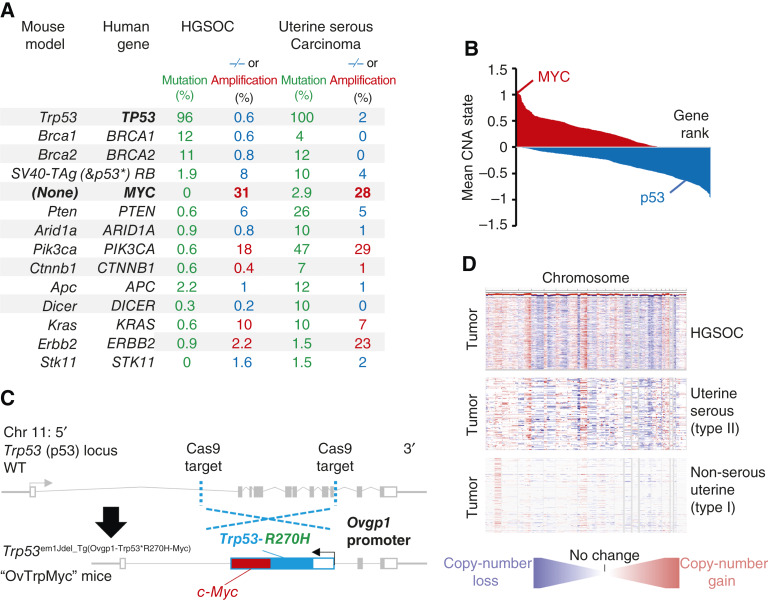Figure 1.
Rationale and design of the transgenic Ovgp1-Trp53-R270H-Myc mouse model. A, Comparison of currently available HGSOC mouse models genetics to genetic alterations in human HGSOC and serous endometrial cancers. −/− refers to homozygous deletion (blue, tumor suppressors), whereas Amp refers to copy-number amplification of at least two extra copies (red, oncogenes). B, Average copy-number state using TCGA HGSOC data at the gene level. Genes are plotted by ranking, with MYC and TP53 highlighted. C, Design of the transgenic OvTrpMyc mouse model. The endogenous Trp53 allele was targeted using a spCas9 and homology donor repair template strategy in the C57BL/6Tc background. Transgene genotyped pups were backcrossed with C57BL/6J mice and heterozygous mice used in all studies. The Ovgp1-driven transgene includes a dominant-negative murine p53-R270H mutant sequence and a murine c-Myc sequence separated by a P2A self-cleaving peptide. D, Comparison of CNAs across the genome for TCGA studied HGSOC and UCEC patient tumors. Red indicates copy-number gain, whereas blue indicates copy-number loss. TCGA, The Cancer Genome Atlas.

